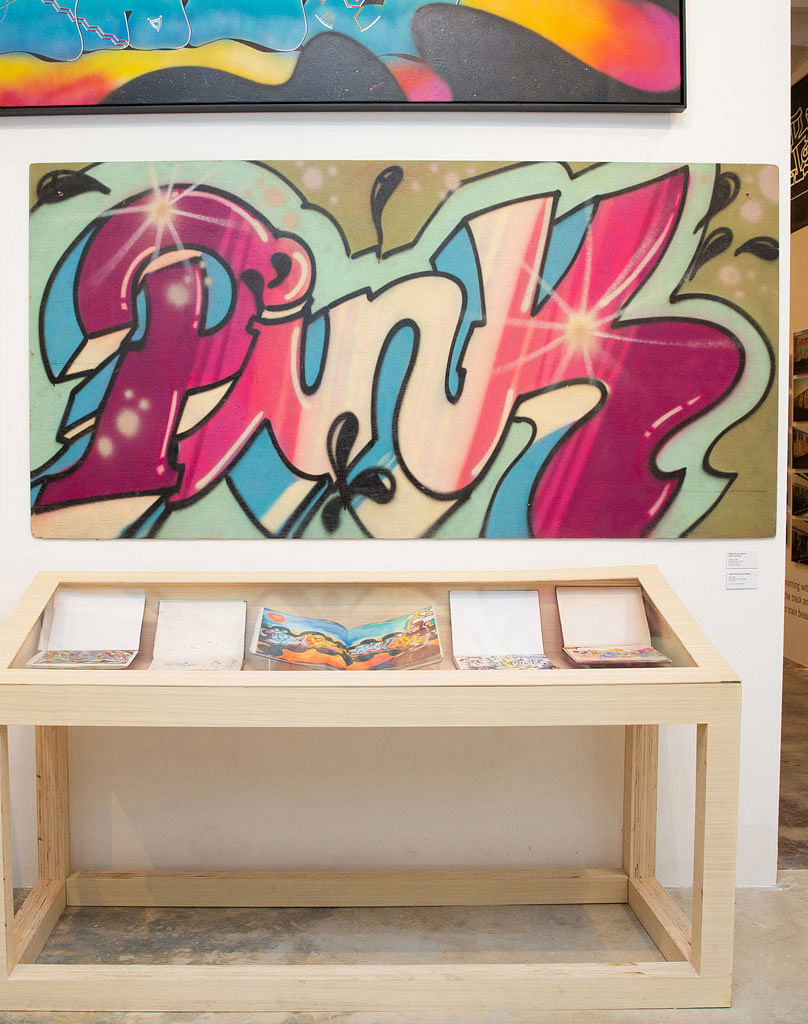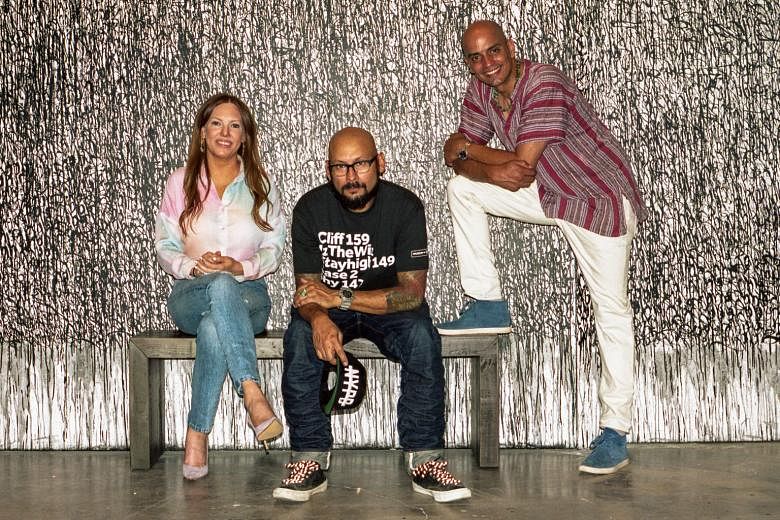MIAMI • When Alan Ket was a teenager growing up in Brooklyn in the 1980s, he fell hard for the graffiti that decorated New York City trains.
Sometimes he was the one painting, but more often, he was a detective, figuring out the best locations to snap pictures of the art. During weekends, he would meet friends at a one-hour photo shop to trade negatives and prints of the graffiti photos they had taken that week.
Preservation was the key. "So many beautiful works of art were being destroyed every week," he said. "It was horrifying."
At the time, he would cut school to spend afternoons at the studio of Mr Henry Chalfant, who had been the crucial documentarian of 1970s train graffiti.
Mr Chalfant had largely stopped photographing trains. He implored Ket and his friends to pick up the baton. "He told us it was up to us to document our own movement."
Ket, born Alain Mariduena, took that mandate seriously and built a life on it, culminating in the opening last Thursday of the Museum of Graffiti in Miami - the first institution devoted to telling the art form's history, as well as documenting its stylistic developments with a curator's eye for detail.
"We have to be our own authorities," said Ket, who is the museum's co-founder.
Some graffiti artists of the early era made the transition to galleries, others into commercial design. But, for a vernacular art that has seeped widely into popular culture, graffiti - especially as represented by the early pioneers - has made few permanent inroads into established museums.
Perhaps that is due to the art form's oppositional nature and perhaps to its evanescence.
Too often, graffiti is explained primarily through a sociopolitical lens, so the Museum of Graffiti's inaugural exhibition, Style Masters: The Birth Of The Graffiti Art Movement, focuses on first principles - letters as artistic building blocks.
The very first wall is a history lesson on the development of letter-writing styles, accompanied by a photo array of train art from 1972 to 1976 to demonstrate how rapidly the form was changing.
The rest of the 297 sq m space offers a deeply condensed history of the art form, from the early moments in which graffiti writers were applying their talents to canvases - on display is the first painting by graffiti artist Lady Pink, from her personal collection - to the ways in which graffiti has been used on clothing, skateboards, album covers and more.

The graffiti aesthetic may be widespread now, but Ket's read is that of a purist. He has a ferocious zeal to protect the legacy of under-recognised pioneers, especially as street art - which borrows some of graffiti's immediacy with little of its charm or technique - becomes more widely known and collected, destabilising both the marketplace and public perception.
That intense historical fanaticism - "a desire to regulate, to keep some kind of stability among the chaos, also to keep a standard of quality", he said - is, in essence, no different from a formal curatorial approach.
Before moving to Miami two years ago to manage a gallery connected to the Wynwood Walls, a mural park around the corner from the Museum of Graffiti, Ket was a graffiti archivist and advocate in various forms.
In the 1990s, he published and edited Stress, a hip-hop and graffiti magazine. He consulted for art exhibitions and wrote monographs on important artists.
Ket had maintained a personal graffiti archive for decades and had begun to wonder if it might be better served at an established institution.
"But what good is it if you give it to the Smithsonian and it sits in its warehouse for the next 40 years?" he said. "More people see it at my house."
Graffiti has appeared at the Smithsonian Institution, but sparingly.
Bringing the museum to fruition became a full-time preoccupation about 11/2 years ago.
Ket met his business partner Allison Freidin, formerly a prosecutor with the state attorney's office, as she was doing legal advocacy for graffiti writers.
She is his sole outside investor - he holds the majority stake - and quit her job to focus on the birth of the museum.
"Ket is really being called on to tell the story properly. I'm also being called on to make sure that we're treated properly by everybody," Ms Freidin said.
Ket is well-connected among graffiti writers and Ms Freidin has extensive relationships in Miami's art and civic communities.
"The marriage of those two Rolodexes is what made this possible," she said.
Ket has also brought in a full-time curator - Mr Carlos Rodriguez, known as Mare 139 - to focus on future exhibitions.
"We want to try to keep adding value not just to history, but also to living history," Mr Rodriguez said. "That part of this is the advocacy part, right? How do you create value for the art and the by-products of this art, and also for the artists?"
The museum will generate three revenue streams: ticket fees, a gift shop and a gallery that will feature new works from a rotating cast of artists who straddle graffiti and fine art. There are also 13 new murals on the museum exterior and on nearby walls.
NYTIMES

